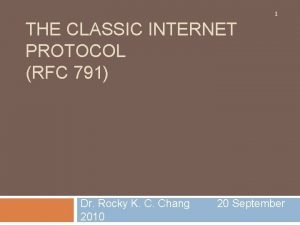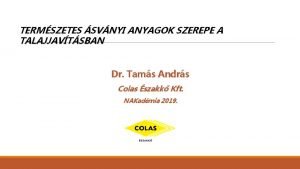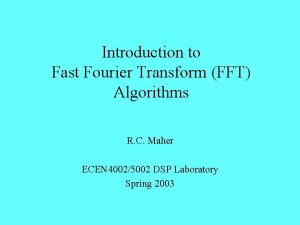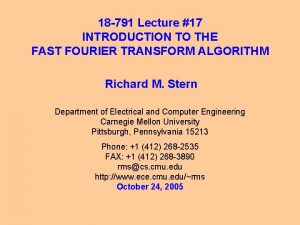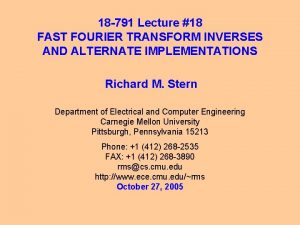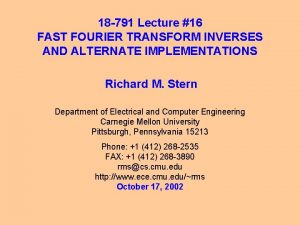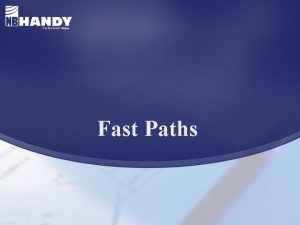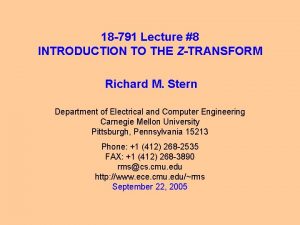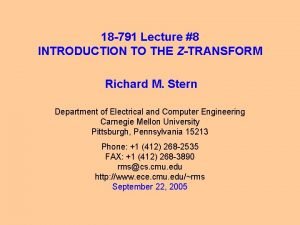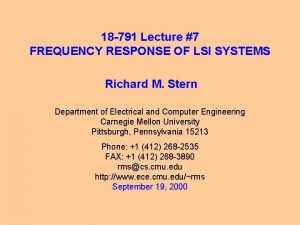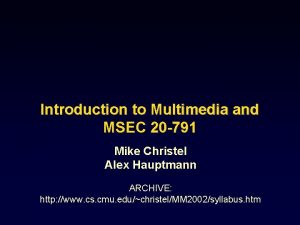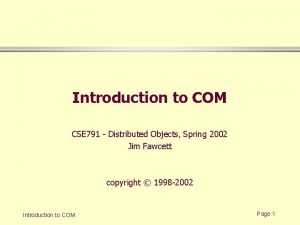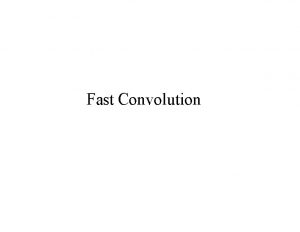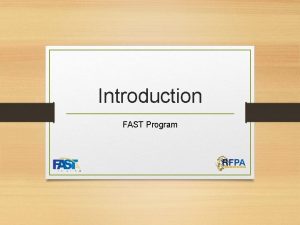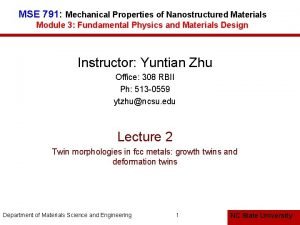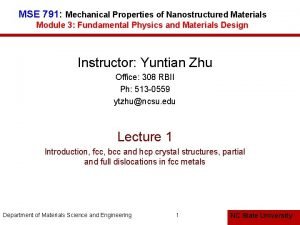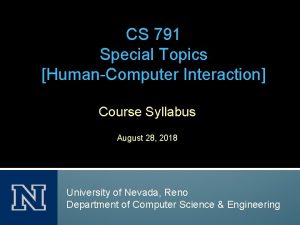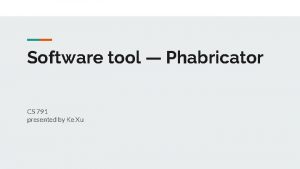18 791 Lecture 17 INTRODUCTION TO THE FAST






















- Slides: 22

18 -791 Lecture #17 INTRODUCTION TO THE FAST FOURIER TRANSFORM ALGORITHM Richard M. Stern Department of Electrical and Computer Engineering Carnegie Mellon University Pittsburgh, Pennsylvania 15213 Phone: +1 (412) 268 -2535 FAX: +1 (412) 268 -3890 rms@cs. cmu. edu http: //www. ece. cmu. edu/~rms October 24, 2005

Introduction n Today we will begin our discussion of the family of algorithms known as “Fast Fourier Transforms”, which have revolutionized digital signal processing n What is the FFT? – A collection of “tricks” that exploit the symmetry of the DFT calculation to make its execution much faster – Speedup increases with DFT size n Today - will outline the basic workings of the simplest formulation, the radix-2 decimation-in-time algorithm n Thursday - will discuss some of the variations and extensions – Alternate structures – Non-radix 2 formulations Carnegie Mellon Slide 2 ECE Department

Introduction, continued n Some dates: – ~1880 - algorithm first described by Gauss – 1965 - algorithm rediscovered (not for the first time) by Cooley and Tukey n In 1967 (spring of my freshman year), calculation of a 8192 point DFT on the top-of-the line IBM 7094 took …. – ~30 minutes using conventional techniques – ~5 seconds using FFTs Carnegie Mellon Slide 3 ECE Department

Measures of computational efficiency n Could consider – Number of additions – Number of multiplications – Amount of memory required – Scalability and regularity n For the present discussion we’ll focus most on number of multiplications as a measure of computational complexity – More costly than additions for fixed-point processors – Same cost as additions for floating-point processors, but number of operations is comparable Carnegie Mellon Slide 4 ECE Department

Computational Cost of Discrete-Time Filtering Convolution of an N-point input with an M-point unit sample response …. n Direct convolution: – Number of multiplies ≈ MN Carnegie Mellon Slide 5 ECE Department

Computational Cost of Discrete-Time Filtering Convolution of an N-point input with an M-point unit sample response …. n Using transforms directly: – Computation of N-point DFTs requires multiplys – Each convolution requires three DFTs of length N+M-1 plus an additional N+M-1 complex multiplys or – For Carnegie Mellon , for example, the computation is Slide 6 ECE Department

Computational Cost of Discrete-Time Filtering Convolution of an N-point input with an M-point unit sample response …. n Using overlap-add with sections of length L: – N/L sections, 2 DFTs per section of size L+M-1, plus additional multiplys for the DFT coefficients, plus one more DFT for – For very large N, still is proportional to Carnegie Mellon Slide 7 ECE Department

The Cooley-Tukey decimation-in-time algorithm n Consider the DFT algorithm for an integer power of 2, n Create separate sums for even and odd values of n: n Letting Carnegie Mellon for n even and Slide 8 for n odd, we obtain ECE Department

The Cooley-Tukey decimation in time algorithm n Splitting indices in time, we have obtained n But and So … N/2 -point DFT of x[2 r] Carnegie Mellon Slide 9 N/2 -point DFT of x[2 r+1] ECE Department

Savings so far … n We have split the DFT computation into two halves: n Have we gained anything? Consider the nominal number of multiplications for – Original form produces multiplications – New form produces multiplications – So we’re already ahead …. . Let’s keep going!! Carnegie Mellon Slide 10 ECE Department

Signal flowgraph notation n In generalizing this formulation, it is most convenient to adopt a graphic approach … n Signal flowgraph notation describes the three basic DSP operations: – Addition x[n]+y[n] – Multiplication by a constant x[n] – Delay Carnegie Mellon x[n] Slide 11 a z-1 ax[n] x[n-1] ECE Department

Signal flowgraph representation of 8 -point DFT n Recall that the DFT is now of the form n The DFT in (partial) flowgraph notation: Carnegie Mellon Slide 12 ECE Department

Continuing with the decomposition … n So why not break up into additional DFTs? Let’s take the upper 4 -point DFT and break it up into two 2 -point DFTs: Carnegie Mellon Slide 13 ECE Department

The complete decomposition into 2 -point DFTs Carnegie Mellon Slide 14 ECE Department

Now let’s take a closer look at the 2 -point DFT n The expression for the 2 -point DFT is: n Evaluating for we obtain which in signal flowgraph notation looks like. . . This topology is referred to as the basic butterfly Carnegie Mellon Slide 15 ECE Department

The complete 8 -point decimation-in-time FFT Carnegie Mellon Slide 16 ECE Department

Number of multiplys for N-point FFTs n Let n (log 2(N) columns)(N/2 butterflys/column)(2 mults/butterfly) or ~ Carnegie Mellon multiplys Slide 17 ECE Department

Comparing processing with and without FFTs n “Slow” DFT requires N mults; FFT requires N log 2(N) mults n Filtering using FFTs requires 3(N log 2(N))+2 N mults n Let N a 1 a 2 16 . 25 . 8124 32 . 156 . 50 64 . 0935 . 297 128 . 055 . 171 256 . 031 . 097 1024 . 0097 . 0302 Carnegie Mellon Slide 18 Note: 1024 -point FFTs accomplish speedups of 100 for filtering, 30 for DFTs! ECE Department

Additional timesavers: reducing multiplications in the basic butterfly n As we derived it, the basic butterfly is of the form n Since we can reducing computation by 2 by premultiplying by Carnegie Mellon Slide 19 ECE Department

Bit reversal of the input n Recall the first stages of the 8 -point FFT: Consider the binary representation of the indices of the input: 0 000 4 100 2 010 6 110 1 001 5 101 3 011 7 111 Carnegie Mellon Slide 20 If these binary indices are time reversed, we get the binary sequence representing 0, 1, 2, 3, 4, 5, 6, 7 Hence the indices of the FFT inputs are said to be in bit-reversed order ECE Department

Some comments on bit reversal n In the implementation of the FFT that we discussed, the input is bit reversed and the output is developed in natural order n Some other implementations of the FFT have the input in natural order and the output bit reversed (to be described Thursday) n In some situations it is convenient to implement filtering applications by – Use FFTs with input in natural order, output in bit-reversed order – Multiply frequency coefficients together (in bit-reversed order) – Use inverse FFTs with input in bit-reversed order, output in natural order n Computing in this fashion means we never have to compute bit reversal explicitly Carnegie Mellon Slide 21 ECE Department

Summary n We developed the structure of the basic decimation-in-time FFT n Use of the FFT algorithm reduces the number of multiplys required to perform the DFT by a factor of more than 100 for 1024 -point DFTs, with the advantage increasing with increasing DFT size n Next time we will consider inverse FFTs, alternate forms of the FFT, and FFTs for values of DFT sizes that are not an integer power of 2 Carnegie Mellon Slide 22 ECE Department
 A word 791
A word 791 Rfc791
Rfc791 Bodrogkeresztúri riolittufa
Bodrogkeresztúri riolittufa 01:640:244 lecture notes - lecture 15: plat, idah, farad
01:640:244 lecture notes - lecture 15: plat, idah, farad Differentiate between acid fast and non acid fast bacteria
Differentiate between acid fast and non acid fast bacteria Example of acid-fast bacteria
Example of acid-fast bacteria Introduction to biochemistry lecture notes
Introduction to biochemistry lecture notes Introduction to psychology lecture
Introduction to psychology lecture Introduction to algorithms lecture notes
Introduction to algorithms lecture notes Fast food essay introduction
Fast food essay introduction Introduction for fast food
Introduction for fast food R fft
R fft Hát kết hợp bộ gõ cơ thể
Hát kết hợp bộ gõ cơ thể Ng-html
Ng-html Bổ thể
Bổ thể Tỉ lệ cơ thể trẻ em
Tỉ lệ cơ thể trẻ em Chó sói
Chó sói Tư thế worm breton
Tư thế worm breton Hát lên người ơi
Hát lên người ơi Môn thể thao bắt đầu bằng từ đua
Môn thể thao bắt đầu bằng từ đua Thế nào là hệ số cao nhất
Thế nào là hệ số cao nhất Các châu lục và đại dương trên thế giới
Các châu lục và đại dương trên thế giới Cong thức tính động năng
Cong thức tính động năng

